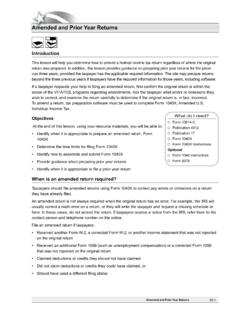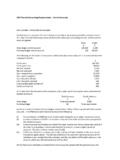Transcription of ACCREDITATION CRITERIA
1 ACCREDITATION CRITERIA SCHOOLS OF PUBLIC HEALTH & PUBLIC HEALTH PROGRAMS amended AUGUST 2021 Council on Education for Public Health 1010 Wayne Avenue, Suite 220 Silver Spring, MD 20910 Phone: (202) 789-1050 Web: Table of Contents Introduction .. 1 A1. Organization & Administrative Processes (SPH and PHP) .. 3 A2. Multi-Partner Schools & Programs .. 4 A3. Student Engagement .. 4 A4. Autonomy for Schools of Public Health .. 4 A5. Degree Offerings in Schools of Public Health .. 5 B1. Guiding Statements .. 5 B2. Evaluation & Quality Improvement .. 6 B3. Graduation Rates .. 7 B4. Post-Graduation Outcomes .. 7 B5. Alumni Perceptions of Curricular Effectiveness .. 8 C1. Fiscal Resources .. 9 C2. Faculty Resources .. 10 C3. Staff & Other Personnel Resources.
2 14 C4. Physical Resources .. 15 C5. Information & Technology Resources .. 15 D1. MPH & DrPH Foundational Public Health Knowledge (SPH and PHP) .. 16 D2. MPH Foundational Competencies (SPH and PHP) .. 17 D3. DrPH Foundational Competencies (SPH and PHP, if applicable) .. 20 D4. MPH & DrPH Concentration Competencies (SPH and PHP) .. 21 D5. MPH Applied Practice Experiences (SPH and PHP) .. 23 D6. DrPH Applied Practice Experience .. 24 D7. MPH Integrative Learning Experience (SPH and PHP) .. 25 D8. DrPH Integrative Learning Experience (SPH and PHP, if applicable) .. 26 D9. Public Health Bachelor s Degree Foundational Domains .. 27 D10. Public Health Bachelor s Degree Foundational Competencies .. 28 D11. Public Health Bachelor s Degree Cumulative & Experiential Activities.
3 28 D12. Public Health Bachelor s Degree Cross-Cutting Concepts & Experiences .. 29 D13. MPH Program Length (SPH and PHP) .. 29 D14. DrPH Program Length (SPH and PHP, if applicable) .. 30 D15. Bachelor s Degree Program Length (SPH and PHP, if applicable) .. 30 D16. Academic & Highly Specialized Public Health Master s Degrees (SPH and PHP, if applicable) .. 31 D17. Academic Public Health Doctoral Degrees (SPH and PHP, if applicable) .. 33 D18. All Remaining Degrees (SPH, if applicable) .. 36 D19. Distance Education (SPH and PHP, if applicable) .. 37 E1. Faculty Alignment with Degrees Offered .. 38 E2. Integration of Faculty with Practice Experience .. 39 E3. Faculty Instructional Effectiveness .. 40 E4. Faculty Scholarship .. 41 E5. Faculty Extramural Service.
4 42 F1. Community Involvement in School or Program Evaluation & Assessment .. 43 F2. Student Involvement in Community & Professional Service .. 44 F3. Delivery of Professional Development Opportunities for the Workforce .. 44 G1. Diversity & Cultural Competence .. 45 H1. Academic Advising .. 46 H2. Career Advising .. 47 H3. Student Complaint Procedures .. 47 H4. Student Recruitment & Admissions .. 48 H5. Publication of Educational Offerings .. 49 Definitions .. 50 Appendix 1 .. 52 1 Introduction1 1) Describe the institutional environment, which includes the following: a. year institution was established and its type ( , private, public, land-grant, etc.) b. number of schools and colleges at the institution and the number of degrees offered by the institution at each level (bachelor s, master s, doctoral and professional preparation degrees) c.
5 Number of university faculty, staff, and students d. brief statement of distinguishing university facts and characteristics e. names of all accrediting bodies (other than CEPH) to which the institution responds. The list must include the institutional accreditor for the university as well as all specialized accreditors to which any school, college or other organizational unit at the university responds (list may be placed in the electronic resource file) f. brief history and evolution of the school of public health (SPH) or public health program (PHP) and related organizational elements, if applicable ( , date founded, educational focus, other degrees offered, rationale for offering public health education in unit, etc.)
6 2) Organizational charts that clearly depict the following related to the school or program: a. the school or program s internal organization, including the reporting lines to the dean/director b. the relationship between the school or program and other academic units within the institution. For programs, ensure that the chart depicts all other academic offerings housed in the same organizational unit as the program. Organizational charts may include committee structure organization and reporting lines c. the lines of authority from the school or program s leader to the institution s chief executive officer (president, chancellor, etc.), including intermediate levels ( , reporting to the president through the provost) d.
7 For multi-partner schools and programs (as defined in Criterion A2), organizational charts must depict all participating institutions 3) An instructional matrix presenting all of the school or program s degree programs and concentrations including bachelor s, master s and doctoral degrees, as Present data in the format of Template Intro-1. The matrix must show undergraduate and graduate degrees distinguish between professional and academic degrees for all graduate public health degrees offered identify whether public health degrees/concentrations are offered in campus-based, distance learning, or both formats SPH only: distinguish public health degrees from other degrees Non-degree programs, such as certificates or continuing education, should not be included in the matrix.
8 1 Required, but no compliance findings will be returned. This information serves as a summary to orient readers to the university and the SPH/PHP. 2 Schools must report all degree programs housed in the school or college and should review the Degree Classification Key available on the CEPH website. Programs should list only the degree programs within the unit of ACCREDITATION . Contact CEPH staff with questions about the unit of ACCREDITATION . See Definitions at the end of this document for additional information. 2 4) Enrollment data for all of the school or program s degree programs, including bachelor s, master s and doctoral degrees, in the format of Template Intro-2. Schools that house other degrees and concentrations (as defined in Criterion D18) should separate those degrees and concentrations from the public health degrees for reporting student enrollments.
9 For example, if a school offers a BS in public health and a BS in exercise science, student enrollment data should be presented separately. Data on other degrees and concentrations may be grouped together as relevant to the school. 3 A1. Organization & Administrative Processes (SPH and PHP) The school or program demonstrates effective administrative processes that are sufficient to affirm its ability to fulfill its mission and goals and to conform to the conditions for ACCREDITATION . The school or program establishes appropriate decision-making structures for all significant functions and designates appropriate committees or individuals for decision making and implementation. School or program faculty have formal opportunities for input in decisions affecting the following: degree requirements curriculum design student assessment policies and processes admissions policies and/or decisions faculty recruitment and promotion research and service activities The school or program ensures that faculty (including full-time and part-time faculty) regularly interact with their colleagues and are engaged in ways that benefit the instructional program ( , participating in instructional workshops, engaging in program- or school-specific curriculum development and oversight).
10 Required documentation: 1) List the school or program s standing and significant ad hoc committees. For each, indicate the formula for membership ( , two appointed faculty members from each concentration) and list the current members. (self-study document) Programs should generally focus the response on the specific committees that govern the unit of ACCREDITATION , not on departmental or school committees that oversee larger organizational units. (self-study document) 2) Briefly describe which committee(s) or other responsible parties make decisions on each of the following areas and how the decisions are made: a. degree requirements b. curriculum design c. student assessment policies and processes d.





